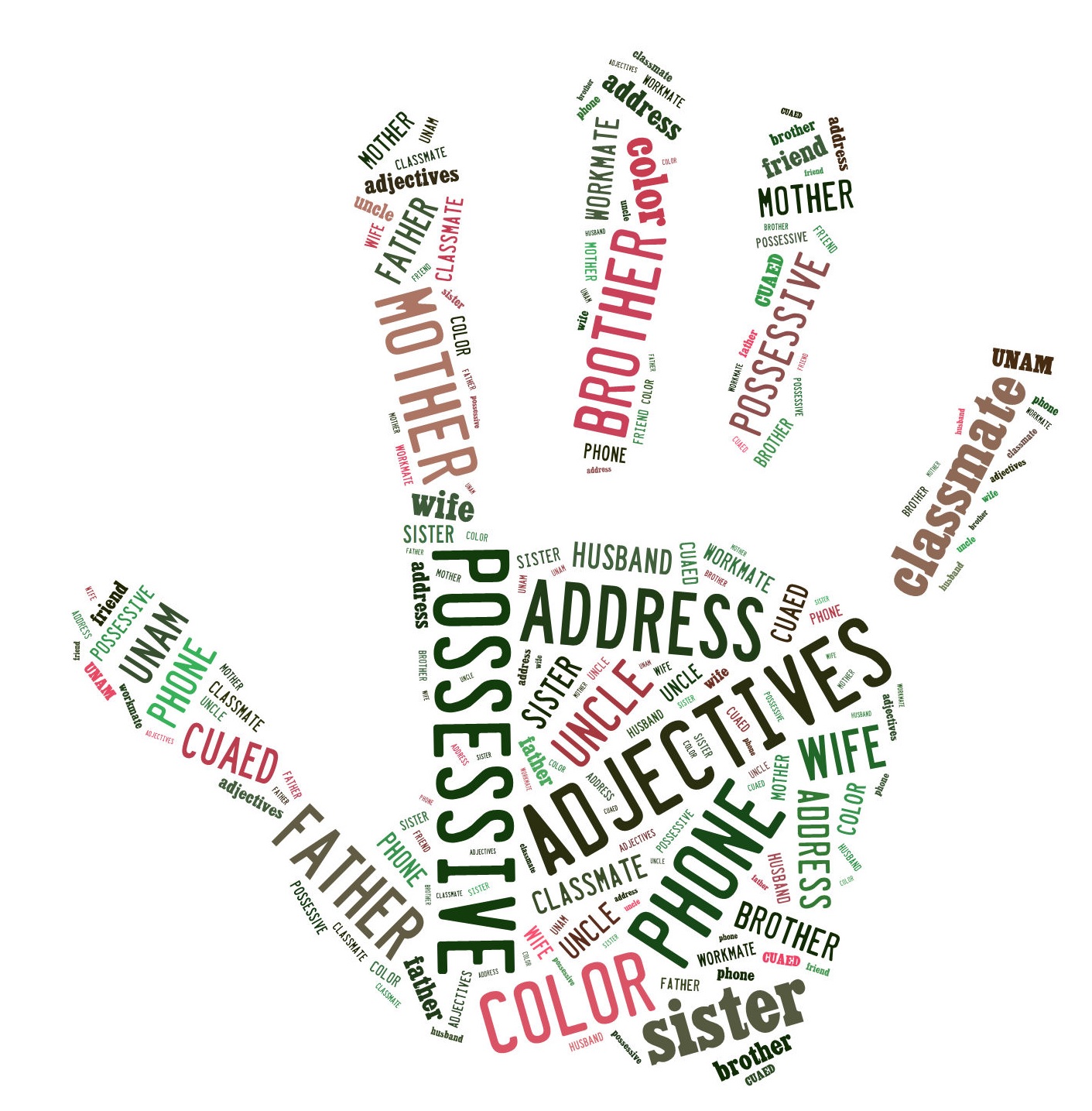Now, you are going to practice the topic “possessive adjectives.” We use them when we refer to people, and it is more in the sense of relationship than ownership. The possessive adjective needs to agree with the possessor and not with the thing that is possessed. In all the activities you are going to talk about personal information, for example, name, favourite colour, address, phone numbers, etc. The possessive adjectives are as follows: my, your, his, her, its, our, and their.
When you check a new topic, it is a good idea to recall what you already know because in that way your brain can remember useful information and so you can learn further details in a better way.
For that reason, you are going to start with a diagnosis evaluation. This time, you are going to try to complete sentences describing some pictures.
Don't worry if you can't answer this first exercise, it's just to explore your prior knowledge.
After this exercise, you are going to watch a video presentation to learn more about “possessive adjectives”.
It's essential that you check that information carefully so that you learn about that topic as much as possible.
After the topic presentation, you are going to practice all the skills: listening, reading, writing and speaking. It's advisable to do all the activities in the suggested order because they have a logical sequence which will help you learn in a better way.
At the end of the material, you are going to find a self-evaluation. You are going to answer an exercise similar to the first one so that you compare what you know before and after this material.

When we use the interrogative forms (is there a, are there any) we want to know if something exists or if something is located in a specific place.
Look at the following examples:
When we are asked with the previous structure, we have to answer in the Simple Present form of a question with the verb to be.
Check the answers to the previous questions:
Is there a museum near here?
Yes, there is.
No, there isn’t. The nearest museum is ten blocks away from here.
Is there a lemon tree in your garden?
Yes, there is. Those lemons are big.
No, there isn’t. There aren’t any trees in my garden.
Are there any good restaurants on Madero street?
Yes, there are. There are about two or three restaurants where you can eat very delicious food.
No, there aren’t any. But there are some good restaurants on Independencia Street.
Are there any oranges in that basket?
Yes, there are. There are two oranges.
No, there aren’t any. We need some.
Note 1: Short answers are underlined.
Note 2: The word “any” is only used in negative and interrogative form.
By the end of this topic you will:
Use possessive adjectives in everyday situations, to point out the relationship between individuals and their personal information.
This time you are going to complete sentences which describe the relationship among people.
In this exercise, don’t worry if you don’t know some of the answers. This is a diagnostic evaluation, so you can omit any response you do not know.
Look at the pictures and drag the words to complete the sentences. When you finish answering this exercise, click on “check answers”. If you have a mistake, you can try to answer again.
Now, you are going to watch a video presentation to learn about “Possessive Adjectives”.
Watch the video carefully, as many times as necessary.
Now that you watched the video you can answer the following exercise. Match the columns. Click on the possessive adjectives that correspond to the pronouns on the left.
Activity 3
In the previous activity, you matched personal pronouns with the corresponding possessive adjectives.
Now, you are going to read small texts, and after each text, you are going to complete some ideas using “possessive adjectives.”
Activity 4
Now, you are going to listen to people talking about other people and their personal information.
Listen to the audio and complete the following exercise. When you finish answering, click on “check answers” to see if your answers are right.
Who does each idea refer to?
Activity 5
It’s your turn to write about your family, friends or any other relevant person for you. Look at the example and write a very similar paragraph about you and your family. Include a photograph or their description.
Then evaluate yourself using the rubric.
Example:

Retrived on:28abril2017 https://pixabay.com/en/family-people-car-looking-children-932245/
Here is a photo of my family, and I am the man on the right. In the picture, we are in our car, in the middle of a beautiful place. You can see my wife Claudia and her sister, Laura. She is with her two daughters. Their names are Fernanda and Karla. They are my lovely nieces.
Your text should be between 50-60 words. Consider the writing rubric when you write your book so that you make sure you include all the necessary features.
Activity 6

Retrived on:28abril2017 https://pixabay.com/en/communication-head-balloons-man-1991852/
You need to talk about someone special for you. It can be your father, mother, or any classmate, friends or a whole family.
Prepare what you are going to say and then record yourself. Take into consideration the speaking rubric.
Answer all the following questions orally.
Example: What is her name? Her name is Lupita.
If you need to look up any word in a dictionary, we suggest you visit Cambridge Dictionary.
Your audio should last 60-70 seconds. Give complete answers and then evaluate yourself using the rubrics.
At the beginning of this material, you worked with some photographs. In that exercise, you tried to identify the correct possessive adjective to complete some texts.
This time you have to complete the same texts, but now you have to write down the correct possessive adjective. You can answer this activity only once.